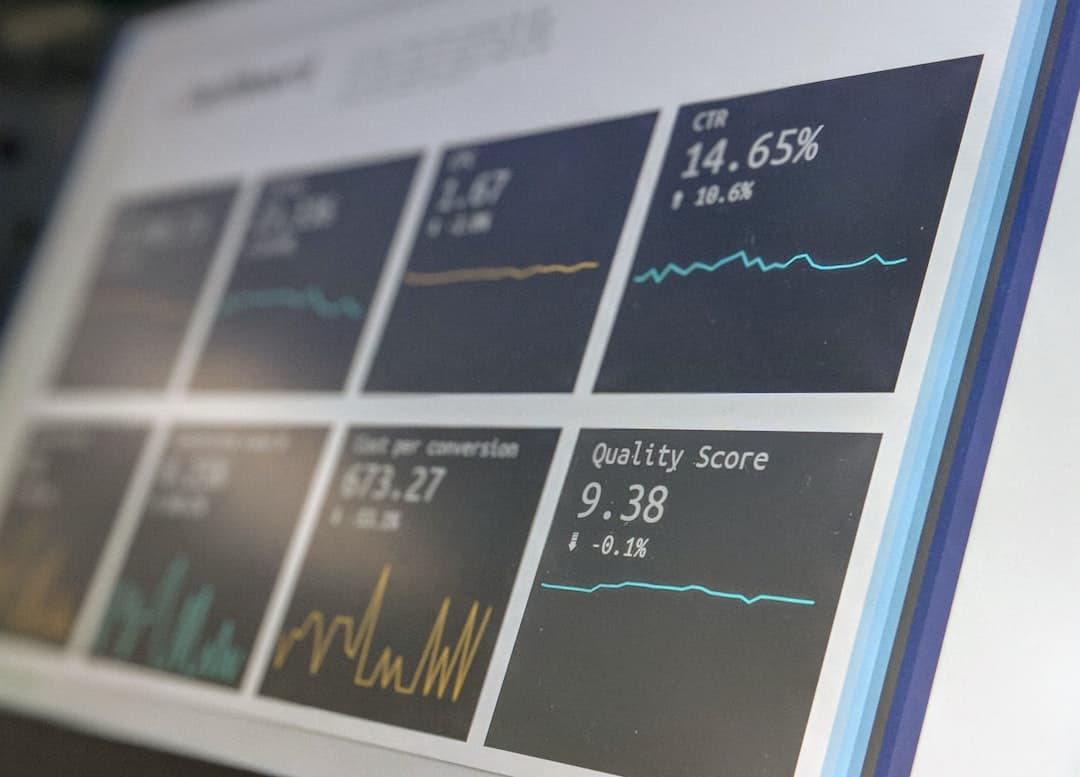Backlinks for SaaS: 7 actionable strategies to boost your SEO in 2024
Why Backlinks Matter for SaaS SEO in 2025
The Evolving Role of Backlinks in Modern Search Ranking
Backlinks remain central to modern search ranking, but their influence continues to evolve alongside advances in search engine algorithms and industry best practices. Algorithms now prioritize the quality, relevance, and contextual alignment of backlinks, not just sheer quantity. For SaaS companies, this shift means high-value links from reputable tech publications, integration directories, and analyst reviews bolster authority more than low-quality links ever could.
Search engines increasingly analyze the intent behind linking pages and assess topical relevance. For example, a backlink from an integration partner’s knowledge base or a recognized SaaS review site carries far more weight than generic links from random directories. Meanwhile, Google’s ongoing updates reinforce the need for organic link profiles built through genuine relationships and useful content—not artificial tactics that could risk penalties.
SaaS marketing teams must monitor not just the number of backlinks, but the sources, anchor text variety, and ongoing engagement metrics driven by those links. By integrating backlink quality into your broader SEO strategy, you reduce vulnerability to algorithm changes and establish sustainable, long-term growth in competitive verticals.
Unique SEO Challenges for SaaS Companies
SaaS companies face unique SEO challenges that stem from complex products, rapid innovation cycles, and crowded digital spaces. Writing content that is both technically accurate and accessible requires close collaboration between marketers and product experts. Without this, teams risk producing shallow articles that fail to build trust or stand out in search results.
Another challenge involves rapid product evolution. As features change or new integrations launch, published content can quickly become outdated—weakening relevance and causing ranking volatility. SaaS marketers must develop processes for regular content audits and agile updates to keep key assets aligned with current offerings.
Additionally, the SaaS sector is saturated with similar “how-to” guides and comparison posts competing for the same high-value keywords. This makes differentiation difficult. Success hinges on surfacing original insights, publishing proprietary data, and building authoritative backlinks from sources respected in the software industry. By addressing these challenges directly, SaaS teams can secure more durable search visibility and support ongoing user acquisition.
Strategy #1: Leverage Expert Content to Attract Editorial Backlinks
Transforming Technical Expertise into Linkable Assets
SaaS companies possess deep technical expertise, but translating that knowledge into assets that actually earn backlinks requires focused intent. Instead of burying this expertise in dense documentation or product manuals, it’s more effective to repurpose internal knowledge into formats the broader tech community values: detailed how-to guides, original frameworks, or data-driven comparisons. Industry professionals and analysts constantly look for trustworthy sources to reference. When your thought leaders—be they engineers or product managers—break down complex problems with clarity, those insights naturally attract mentions and editorial backlinks from high-authority SaaS and tech publications.
For example, a breakdown of security implications for a popular integration, or a feature comparison backed by real platform data, positions your team as subject matter experts. These resources don’t just build credibility; they serve SEO goals by attracting relevant referral traffic and increasing your rank for competitive queries. In a market where most content skims the surface, actionable assets that showcase authentic technical depth stand out, earning organic backlinks and growing your authority in search results.
Collaborating with Engineers and Product Leads for Authority
Building authority in competitive SaaS SEO requires direct collaboration with engineers and product leads. Marketers rarely have full technical context, but subject matter experts possess valuable insights that can transform content from generic to authoritative. Establish regular feedback loops—such as quick interviews, collaborative outlines, or shared content briefs—to capture authentic details about features, integrations, and use cases.
For example, working with an engineering team can reveal API performance benchmarks or security considerations that few competitors discuss. Product leads can contribute to in-depth comparison articles, offering unique angles on how your solution addresses real-world pain points. These collaborations not only result in assets that earn high-value backlinks, but also ensure factual accuracy and richer storytelling throughout your content library.
Systematizing this collaboration means making participation easy for technical staff—minimizing disruption while extracting the expertise needed for standout content. Consistent involvement from product stakeholders allows you to create materials that resonate with both technical buyers and non-technical decision-makers, establishing your SaaS brand as a trusted voice in the industry.
Strategy #2: Launch Research-Driven Resources and Data Studies
Designing Original Studies that Earn Organic Links
Designing original studies sets SaaS companies apart in saturated markets and creates natural backlink opportunities. Start by identifying unique datasets within your platform—usage statistics, workflow trends, or aggregated anonymized performance metrics. Analyze these data points to uncover actionable insights or benchmark findings that matter to your target audience. Ensure your methodology is transparent and your data is credible; reporters and analysts are more likely to cite trustworthy, well-documented studies.
Effective studies solve real industry questions, such as comparing adoption rates of automation features or quantifying time savings from new integrations. Visualize findings with charts, infographics, or interactive dashboards to maximize shareability. Include clear, data-driven narratives that journalists, bloggers, and analysts can easily reference in their articles.
Once published, actively promote your studies to relevant media contacts, influential SaaS blogs, and industry newsletters. In parallel, encourage your internal experts to discuss findings on webinars or podcasts, amplifying reach and reinforcing your status as an authoritative source. Consistently publishing original research prompts ongoing organic backlinks—strengthening SEO and pushing your brand to the forefront of thought leadership in your sector.
Promoting Data Content to SaaS and Tech Publications
Promoting data-driven content to SaaS and tech publications requires a targeted approach and an understanding of what these audiences value: actionable insights, industry benchmarks, and original research. Start by framing your data in a way that highlights emerging trends or uncovers challenges relevant to their readership. Craft compelling summaries or press releases that clearly state the most impactful findings, and offer concise visualizations to make complex metrics accessible at a glance.
Prioritize outreach to editors and journalists who regularly cover topics your data helps clarify. Personalize each pitch with the specific angle most useful to their audience—whether it’s a new adoption statistic for SaaS security solutions or comparative performance of popular integrations. Sharing early access or exclusive insights can further boost interest and encourage coverage.
Pair earned placements with ongoing engagement. For example, support published studies with thought leader commentary, participate in follow-up interviews, or host Q&A sessions to deepen the discussion. This sustained strategy builds long-term relationships with tech writers and editors while generating high-quality backlinks, driving referral traffic, and reinforcing the authority of your data among industry peers.
Strategy #3: Build Industry Relationships for High-Quality Guest Posting
Identifying Strategic Guest Blogging Opportunities in SaaS
Identifying the right guest blogging opportunities in SaaS hinges on relevance, audience overlap, and domain authority. Start by mapping out industry blogs, publications, and vendor sites that cater directly to your ideal customer segments. Prioritize outlets where the readership matches your buyer personas and where content aligns with your expertise—such as SaaS security, onboarding, or workflow automation. High-quality, contextually relevant backlinks from these sources send strong signals to search engines about your domain’s influence.
Evaluate each candidate blog for editorial standards, organic traffic, and the authority of existing contributors. Outreach is far more effective when supported by original topic pitches that add unique value, rather than rehashing common trends. For instance, offer deep dives into complex product integrations, or share insightful case studies demonstrating measurable impact from your platform’s API.
Monitor results over time by tracking referral traffic, keyword movements, and backlink profiles associated with your guest contributions. Strategic guest blogging does more than build SEO—it positions your team as thought leaders in the SaaS space, opening up new channels for lead generation and brand partnerships.
Crafting Content that Resonates with Diverse SaaS Audiences
To resonate with diverse SaaS audiences, content must bridge the knowledge gap between technical users, decision-makers, and business stakeholders. Begin by segmenting your core reader groups—such as engineers seeking integration guides, product managers needing feature overviews, or executives evaluating ROI. Tailor messaging for each group: use clear, non-technical explanations for leaders, while offering detailed walkthroughs or code snippets for practitioners.
Balance accessibility with depth. Visual aids like flowcharts, step-by-step tutorials, or embedded demos help clarify complex topics without overwhelming less technical readers. Meanwhile, include links to more specialized resources for those who want to dig deeper. Structure every guide or article to address specific pain points, weaving in use cases and results from real customers to provide context and credibility.
Maintain consistency in voice and expertise by collaborating with subject matter experts throughout the creation process. Review each draft to ensure factual integrity and clarity. By designing content that genuinely informs and solves problems for every segment, SaaS marketing teams strengthen brand trust and capture interest across the full buying committee—converting organic traffic into actionable leads.
Strategy #4: Harness Product Integrations and Partner Pages for Backlinks
Negotiating Co-Marketing and Integration Listing Opportunities
Negotiating co-marketing and integration listing opportunities expands the reach of SaaS brands while strengthening their SEO foundation. By partnering with complementary platforms, SaaS teams can secure backlinks on high-authority integration directories and shared landing pages. These listings often attract organic traffic from users actively seeking solutions that work together, improving both visibility and referral quality.
Successful negotiations require a clear win-win value proposition. Start with a list of product integrations or ecosystem partners whose audiences overlap with your own. Approach partners with specific proposals—such as joint webinars, collaborative case studies, or mutual feature spotlights—that can be promoted across both parties’ channels. Request backlink placements within partner content, official announcement blogs, or integration libraries.
Document each collaboration in detail, ensuring both teams align on messaging and cross-linking strategies. Beyond SEO benefits, these efforts foster ongoing relationships, open doors to future co-marketing opportunities, and integrate your SaaS solution into a broader industry conversation. This systematic approach helps marketers establish reliable acquisition channels in addition to fortifying search rankings.
Strategy #5: Target SaaS Review Platforms and Directories
Optimizing Profiles for SEO and Referral Traffic
SaaS teams often overlook the impact of third-party profile optimization on both SEO and referral traffic. Every profile you control—whether on software directories, partner pages, industry associations, or press portals—is an opportunity to reinforce your value proposition and improve search visibility. Begin with consistent, keyword-aligned messaging across all channels. Ensure your company description, product features, and unique selling points are fully articulated, mirroring the SEO strategy you use on your main website.
Incorporate strategic links back to your core product pages, resource hubs, and thought leadership assets. For example, include links to comparison guides or integration documentation on relevant profiles to support users researching alternatives. Use UTM parameters where possible to measure referral traffic from each channel, enabling data-driven optimization of your outreach and content priorities. Completing and regularly updating these profiles also signals credibility to search engines, which can further boost your SaaS company in competitive SERPs.
In saturated markets, small optimizations compound: an up-to-date G2 or Capterra listing, accurate LinkedIn business details, and a fully built-out Crunchbase profile all generate touchpoints for prospects and potential backlink sources. When executed with intent, profile optimization drives both direct referrals and long-term authority growth.
Strategy #6: Expedite Link Earning with Thought Leadership and PR Campaigns
Becoming a Credible Source for Journalists and Analysts
Establishing your SaaS company as a trusted resource for journalists and industry analysts calls for more than simply publishing product updates. Journalists seek authoritative insights that clarify trends, explain technologies, or add expert commentary to ongoing conversations in SaaS and related sectors. This means your team must invest in creating source-worthy materials—think proprietary research, practical guides, or Q&As with subject matter experts on your staff.
Offer concise, data-backed perspectives on industry shifts or regulatory changes, supporting journalists’ needs for credible attributions. For instance, publishing a detailed analysis of how privacy regulations shape SaaS buying decisions, or sharing aggregated anonymized customer usage data to spotlight broader trends, gives reporters concrete material to cite. In turn, this increases the likelihood of being referenced in influential outlets, which directly benefits your SEO efforts by earning high-quality backlinks and reinforcing your brand’s authority.
Engage proactively with media by responding to relevant queries and contributing insights to industry stories. Build transparent, ongoing relationships—making it easier for reporters to trust your expertise and return to your team for future coverage. Over time, becoming a reliable source shapes your company’s digital reputation and amplifies both organic reach and referral traffic.
Strategy #7: Automate and Scale Your Backlink Activities
How Automation Frees SaaS Teams to Focus on Innovation
Automation transforms SEO efforts for SaaS marketing teams by shifting time away from manual link prospecting and tedious outreach. Instead of dedicating hours to repetitive backlink tasks, teams can deploy automated workflows for identifying opportunities, vetting domains, and executing outreach sequences at scale. Automation ensures consistency and accuracy, reducing the likelihood of wasted effort on low-impact sites.
With these processes handled, marketers regain the bandwidth to develop richer educational assets, experiment with emerging SEO tactics, and coordinate with product leads on innovative content projects. For example, automation can surface relevant partnership opportunities or consolidate backlink reporting, allowing for data-driven decisions without added administrative strain. The result is a higher impact from every campaign—and a richer feedback loop between SEO, product development, and overall marketing strategy. This frees teams to prioritize strategic initiatives that drive both search visibility and real value for SaaS customers.
Airticler’s Approach to Seamless Backlink Building
Airticler approaches backlink building not as an isolated task but as a deeply integrated aspect of the content creation lifecycle. By incorporating link strategy at the earliest stages of planning, every content asset is evaluated for its potential appeal to specific industry audiences, partners, and media outlets. Effective backlink targets are identified in tandem with content topics, ensuring each asset serves both SEO objectives and broader awareness goals.
This process emphasizes automation without sacrificing quality. Consistent outreach and relationship management with relevant SaaS blogs, integration partners, and analysts are systematized, enabling scalable yet personalized link acquisition. Backlink placements are prioritized based on authority, relevance, and their capacity to drive qualified referral traffic—not simply volume.
Continuous monitoring allows real-time optimization. Data on new links, referral traffic, and content performance is analyzed to refine outreach priorities and content formats. This approach results in a sustainable, repeatable system where backlink acquisition is woven into daily operations—maximizing both organic search impact and long-term brand authority in the SaaS market.
Next Steps: Building Your SaaS Backlink Engine for 2024
Framework for Sustainable Link Acquisition
A sustainable link acquisition framework relies on systematic, repeatable processes rather than sporadic campaigns. For SaaS marketing teams, the first step is to identify linkable content themes that align with both search intent and unique product expertise. Prioritize evergreen topics—such as platform integration guides or industry benchmarks—that retain value over time and continue to attract backlinks long after publication.
Next, establish workflows for cross-team collaboration. This may mean creating regular syncs between content, product, and engineering teams to ensure technical accuracy and align messaging. Develop outreach lists targeting industry blogs, tech review platforms, and partners whose audiences match your ideal customer profile. Consistently monitor acquisition sources and backlink quality through specialized tools, focusing on relevance and authority rather than just raw quantity.
Document each phase of the process, from ideation to outreach and follow-up, so efforts can scale predictably as your team grows. With this framework in place, SaaS brands not only build high-quality backlinks that boost SEO but also set the stage for long-term domain authority—outpacing competitors that depend on one-off link-building surges.
Turning Advanced Backlink Strategies into Lasting SEO Results
Advanced backlink strategies produce lasting SEO results when woven into a continuous, adaptive process. Growth-focused SaaS teams move beyond one-off campaigns by regularly updating link-worthy assets, cultivating industry relationships, and leveraging proprietary research as ongoing sources of authority. Success relies on balancing creative outreach—like co-marketing or expert roundups—with a disciplined cadence of monitoring and refreshing top-performing content.
Measuring long-term impact means tracking rankings, organic traffic, and referral conversions originating from high-quality sources. Prioritize link placements that not only enhance authority but also drive actionable user journeys, such as resource libraries or onboarding guides that pull visitors deeper into your product ecosystem. Over time, every incremental win in backlink acquisition compounds your SaaS brand’s authority and resilience.
Continuous learning is non-negotiable. Analyze which strategies yield both links and qualified leads, then double down on data-driven tactics. This holistic approach to backlinks transforms SEO from a short-term boost into a sustainable competitive advantage, supporting pipeline growth and adapting to constant changes in the search landscape.



